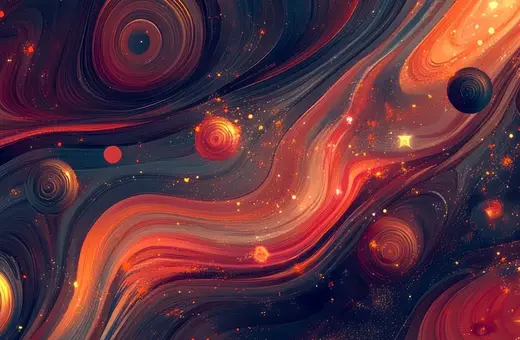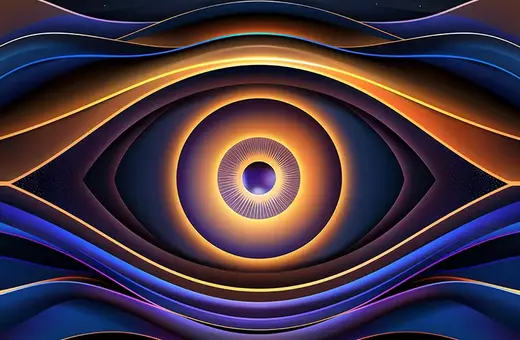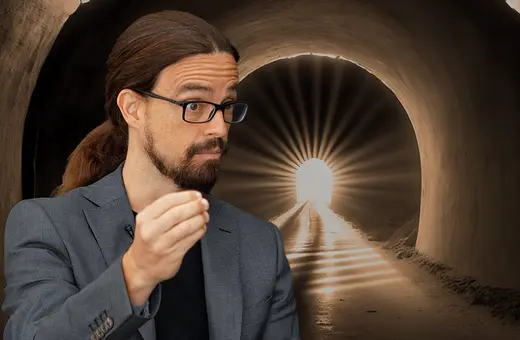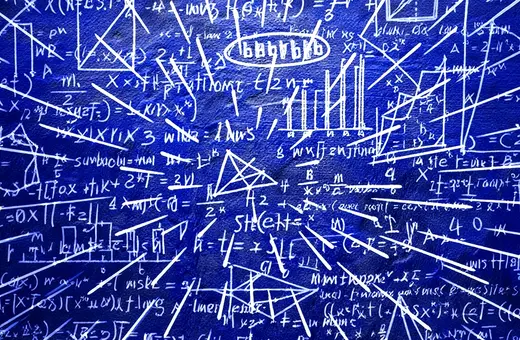We often come across the ‘q-word’ in fields unrelated to quantum physics. In the realm of pseudoscience, quantum physics terms are used to explain everything from an ability to influence our reality, read minds, and heal ourselves. The average educated scientist may scoff at these claims and never think anything of them. However, professor of physics Philip Moriarty argues that, from Wigner to Pauli, expert physicists have long since engaged with quantum-inspired mystical claims, and thus, along with the general rise of pseudoscience and misinformation, physicists too had a historical role to play in the promotion of quantum ‘woo-woo’.
“Our bodies and our universe aren’t solid things at all. They’re patterns of energy. By influencing the frequency of energy in and around your body, you can change your physical reality."
So says John Amaral, self-styled energy healer, life coach, and guru to a gamut of celebrities so famous that surnames are superfluous: Gwyneth, Meghan, Harry – you can probably guess the others on the list. (Surprisingly, however, Oprah isn’t one of Amaral’s clients. In this universe at least.) Amaral’s Energy Flow Formula is in intense demand in the rarefied heights of A-lister communities. He claims that by influencing the “energy fields” around our bodies he can, and I quote, “heal physical injuries, reduce stress, anxiety, and depression, and reach and sustain new levels of energy, clarity, and fulfilment so [his clients] can feel and live better.”
 SUGGESTED READING
Quantum computing is the key to consciousness
By Tim Palmer
SUGGESTED READING
Quantum computing is the key to consciousness
By Tim Palmer
What do those energy fields comprise? Where do they originate? How is it possible to influence them to the extent that even physical injuries can allegedly be healed? Because of quantum physics, of course. According to Amaral, the double slit experiment – a cornerstone of quantum physics – “proves, without a shadow of a doubt, that our consciousness actually shifts or alters, in some way shape or form, physical reality.”
Spoiler: it doesn’t.
The web comic xkcd has some especially salient advice for those who encounter the ‘q-word’ in the wild: “Protip: You can safely ignore any sentence that includes the phrase ‘According to quantum mechanics’ ”. Given that I’m a dyed-in-the-wool experimental physicist for whom quantum mechanics plays a central role in my professional life, you will not be entirely surprised to hear that I share xkcd’s deep cynicism. And I could spend the rest of this piece carefully dissecting and lampooning just how “quantum energy healers” like Amaral mangle the fundamental physics underpinning quantum mechanics. But there’s a rather less obvious, and much more intriguing, story to be told here about physicists’ deep culpability when it comes to the rise of quantum mysticism.
Woo, meet Goop
Although the healer John Amaral and I are poles apart when it comes to our views on the role of quantum mechanics in big, bad world around us, I have enjoyed corresponding sporadically with Amaral over the last few years. We’ve exchanged a number of emails and had an hour-long Zoom conversation during one of the pandemic lockdowns that was, at least from my perspective, engaging, productive, and not infrequently fascinating. This is hardly the traditional reaction of a physicist to quantum woo, I know, but, as with any experiment in physics, we can only draw conclusions based on the empirical evidence in front of us. Let me explain.
___
A signature feature of quantum mysticism is its misappropriation of physics terminology in a wider, every-day context
___





















Join the conversation